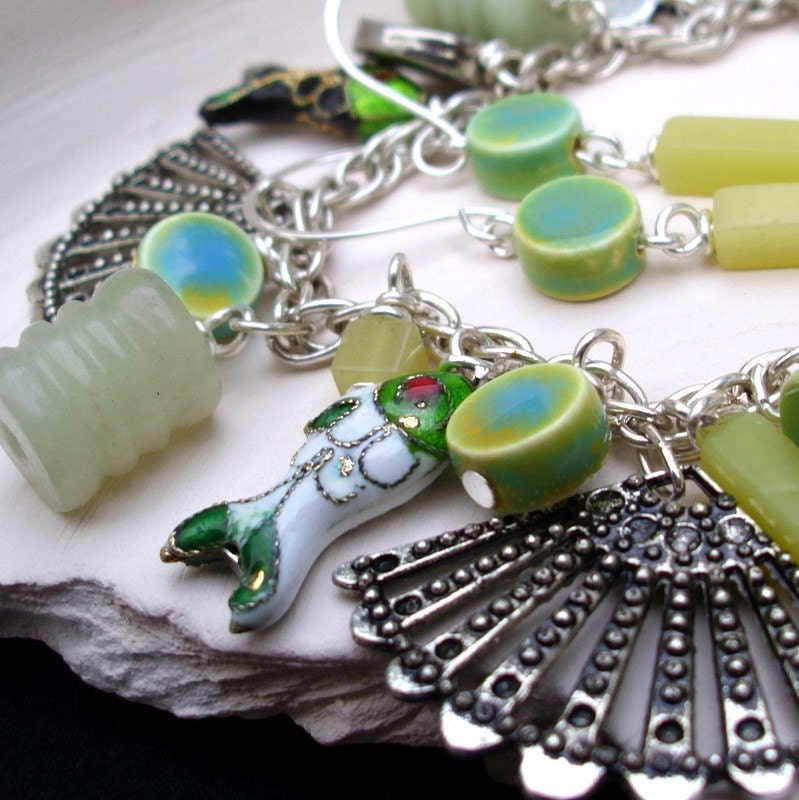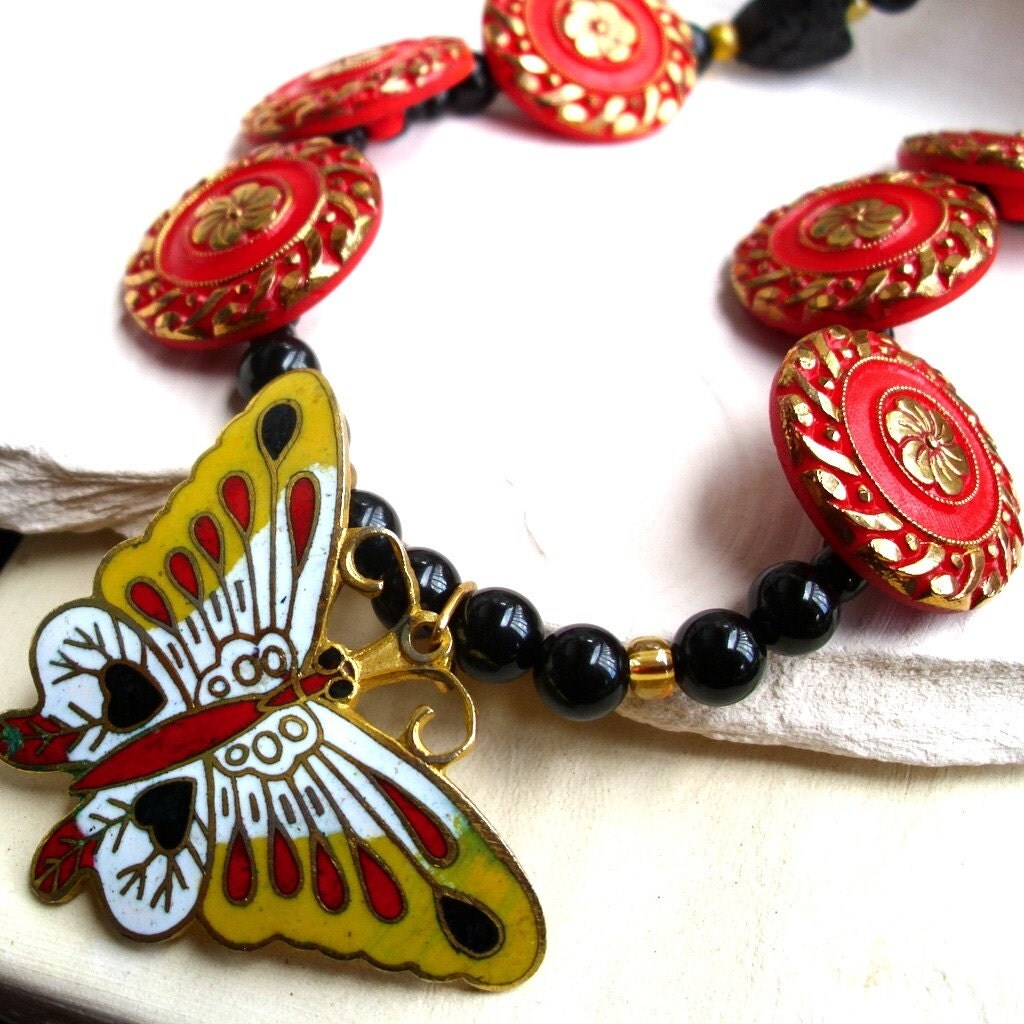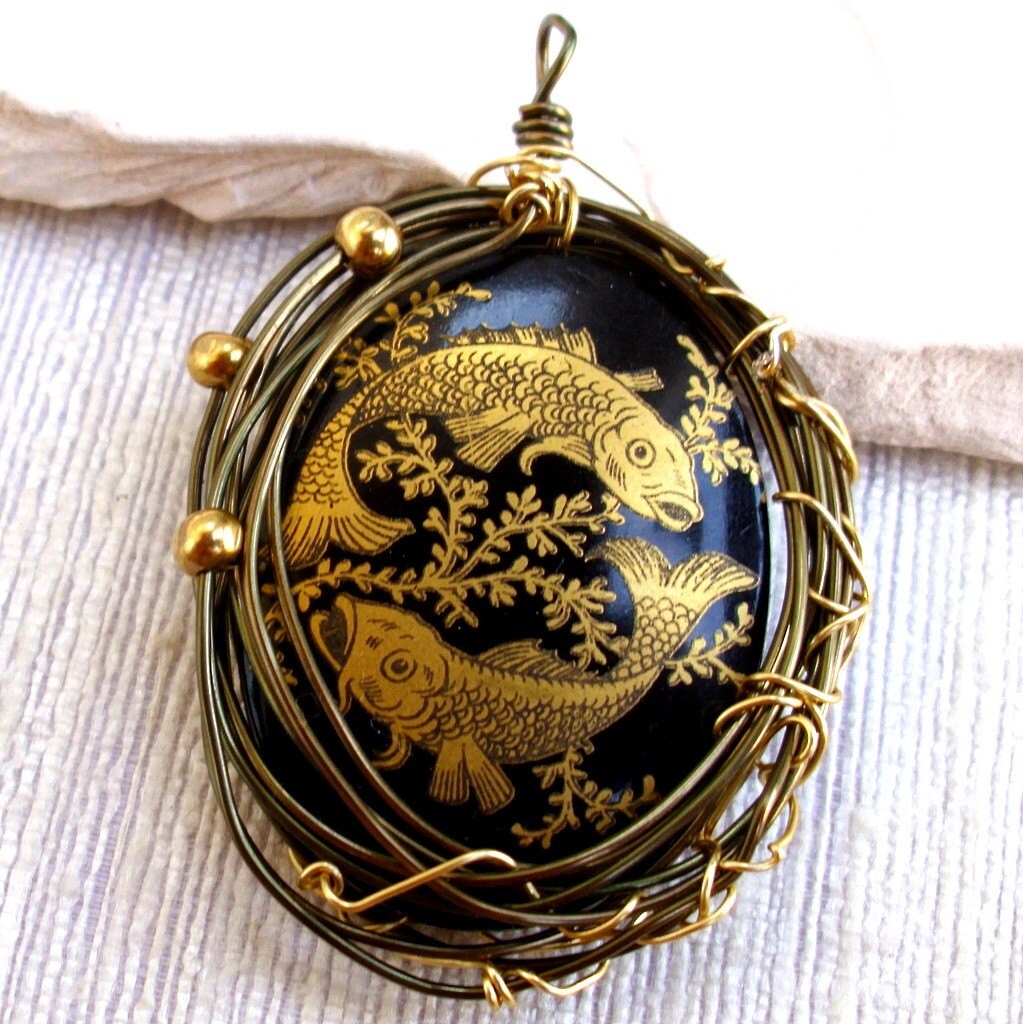
That's okay; it sold last November. Anyhow.
It occasionally troubles me to create Asian-inspired designs. However, the following things always and without fail suggest Asia to me:
- peonies/ranunculus/large floral patterns
- cloisonne
- fish
- jade
- strong black/red, blue/red, or black/green color palettes

The thing is -- I took Art History with a global emphasis and Artists in Traditional China in school -- the latter in seminar under Cheng-chi Hsü, one of the world's foremost experts on Chinese painters and their relationships with art connoisseurs. I spent that class reading the UCR library's entire extensive section about Yangzhou courtesans so I could roleplay a courtesan novelist for the final project. And this was after I abandoned, as beyond me without the ability to read Chinese script, a paper about the transgressive gender presentation of the painter-poet. I am as educated on the matter of Asian art as most amateurs can claim to be. Why do I always have this guilty feeling when I'm as qualified as most Westerners to identify Asian motifs?
But that requires me to think of myself as a Westerner, which is a problem in and of itself, and it goes back to that old linguistic problem of the Orient and the Occident.

Available here.
Basically, the word "Oriental" means "from somewhere else." It means, basically, "Them." "Those people." "The others." To refer to someone as an Oriental is literally to say "the person who is deeply unlike me." (This is why, in the Age of Steam, North Africans and Gypsies were called "orientals," though the term is usually specific to the continent of Asia today).
To call oneself a Westerner or Occidental assumes a geographical position; it says, "Of course this is the West and that the East. Anyone who matters is standing right here, where it's true."

So true, Mr. Munroe. So true.
So for the moment, I continue to soothe my conscience by using the terms "Asian" and "tribal," but being specific in descriptions ("motifs taken from Chinese scrolls," "suggested by the shapes of West African hunting trophies") and tagging with "asian inspired" and "tribal inspired." The butterfly necklace up above is called "Papillon Orientaliste" -- the Orientalist butterfly, not the Oriental -- because I am trying to suggest an item created with elements that construct a reflection of a worldview of "the exotic" (there's an unwieldy construction), not that there actually is an Other to refer to by this term.
Possibly this is still morally corrupt, but it keeps me feeling honest, and I still think that's important.
No comments:
Post a Comment